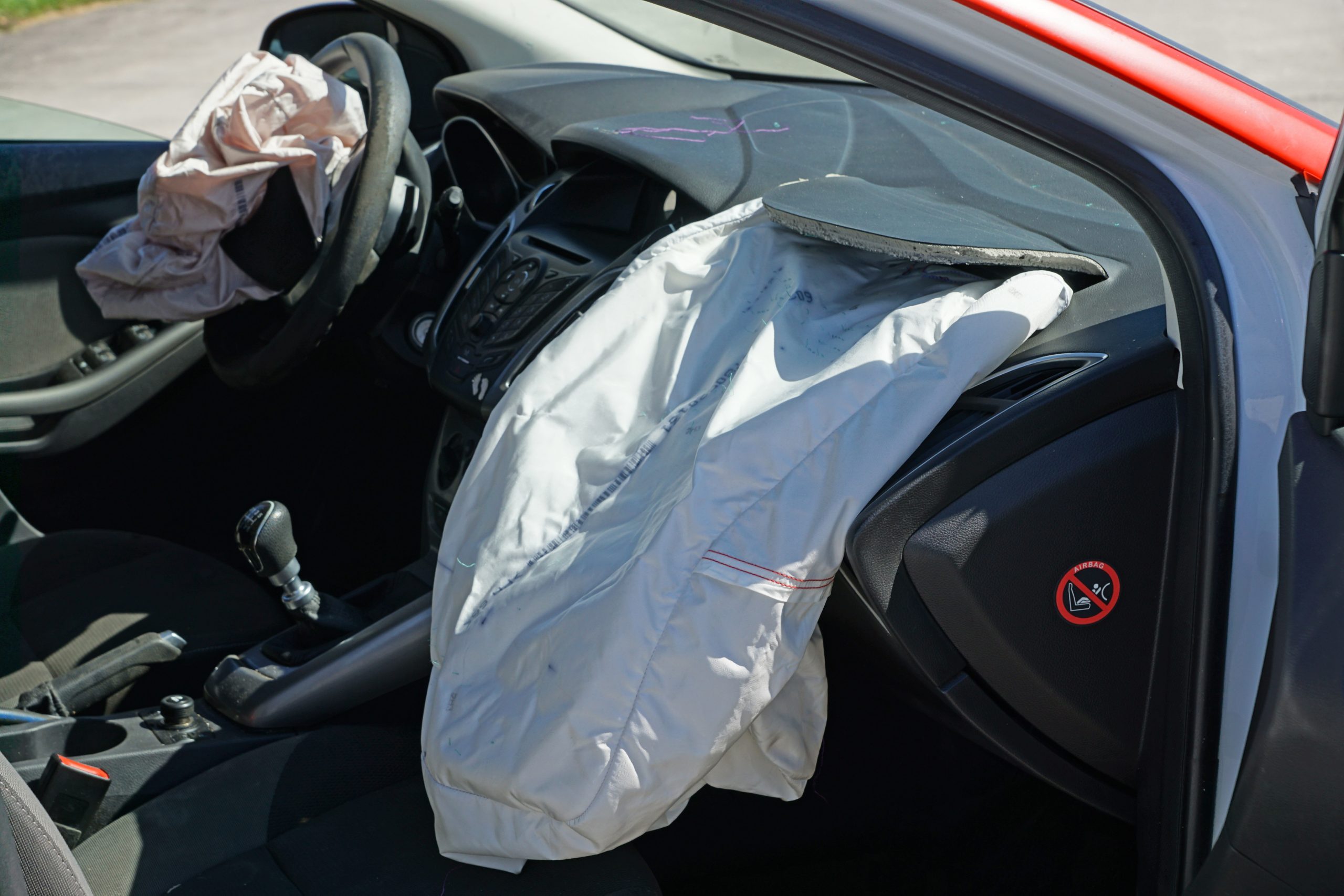In a previous blog post, we discussed how exactly uninsured/underinsured motorist (UM) benefits can be rejected in Louisiana. While that post went through some of the legal technicalities involved in rejecting UM coverage, it did not discuss in depth some of the scenarios in which coverage might be rejected and how the court might actually rule despite those legal technicalities.
This blog post will focus on specific cases and scenarios in which, despite not following every legally prescribed requirement under Louisiana law, the court has decided that coverage was actually properly rejected or limited. Some of these examples involve just a word or two out of place, others involve completely leaving off pertinent information. But all of the below examples make it clear that the parties’ intents are more important that perfectly following the letter of the law.
The first example deals with a case involving an automobile accident. In that case, the individual driving the car involved in the accident was driving one of his employer’s vehicles. So the question was whether or not the employer’s insurance company, General Insurance Company of America (GICA), had properly produced a valid and enforceable uninsured/underinsured motorist rejection form, as required by the commissioner of insurance. Whether or not this UM rejection form had been properly completed would mean the difference between $100,000.00 and $1,000,000.00 available under the policy. GICA contended that it had filled the form out properly and that coverage should be $100,000.00, and the individual driving the car claimed the opposite and that coverage should be in the amount of $1,000,000.00.
In that case, the plaintiff argued that the form did not fulfill all requirements as specified by Louisiana statute for proper uninsured/underinsured motorist rejection. Specifically, the form that was signed had an improper title. Despite the fact that the form did not have the exact proper title, the court decided that the form was still valid and enforceable, and therefore, UM rejection was properly executed. The governing factor in the case was whether or not GICA’s intent was clear from the UM rejection form. Because the intent was clear, despite the improper title, rejection was still proper.
Another example from the Louisiana court system involved a UM rejection form that not only had the title wrong, but also had several other deviations. Despite these errors, the uninsured/underinsured motorist rejection was still deemed proper because the form was clear about the limitation of the coverage. From the form, it was obvious that the party meant to limit UM motorist coverage.
Yet another case dealt with a form that was missing the insurance company name and policy number. Both of those pieces of information are technically required by law in order for the UM rejection to be valid. However, the court in that case ruled that such omissions will not invalidate an otherwise valid form when it is clear that the intent was to reject UM coverage. The technical errors had little weight on the court’s decision because the overall intent of the parties was clearly stated in the signed document.
In a Louisiana Supreme Court case, a form did not properly contain the printed name of the legal representative of the corporate insured. However, once again, despite this technical error, the Court determined that the uninsured/underinsured motorist rejection form would not be considered invalid because of that small error because the overall intent of the parties was clear from the form.
From these examples, it is clear that the courts will not always strictly apply the stated law and that sometimes the overall intent of the parties is more important and carries more weight in determining the validity of a UM rejection form.
Continue reading
 A man is in the hands of a facility tasked with providing sufficient medical care. Instead of meeting this standard of care and due diligence, the facility fails to adjust the man’s diet, and he chokes on solid food that he should not eat, leading to his death. When his parents and children bring multiple complaints of medical malpractice, his children’s claim gets dismissed despite the apparent negligence of the facility. Why did that happen?
A man is in the hands of a facility tasked with providing sufficient medical care. Instead of meeting this standard of care and due diligence, the facility fails to adjust the man’s diet, and he chokes on solid food that he should not eat, leading to his death. When his parents and children bring multiple complaints of medical malpractice, his children’s claim gets dismissed despite the apparent negligence of the facility. Why did that happen? Insurance Dispute Lawyer Blog
Insurance Dispute Lawyer Blog


 Slip-and-fall cases are prevalent in the restaurant industry. In handling various kinds of food and drink, it makes sense that sometimes, things end up on the floor and can cause a slip hazard for customers. But when a customer falls without a clear cause, how can the court determine who is at fault?
Slip-and-fall cases are prevalent in the restaurant industry. In handling various kinds of food and drink, it makes sense that sometimes, things end up on the floor and can cause a slip hazard for customers. But when a customer falls without a clear cause, how can the court determine who is at fault?
 Expert testimony is one tool litigants can use to prove their arguments in a court of law. Expert witnesses are highly credible individuals with advanced knowledge in a particular field in a lawsuit. The testimony of experts is meant to assist the court in understanding the evidence in matters of fact. But not just anyone claiming to be an expert can testify on behalf of a litigant. As homeowners Blake and Courtney Freeman learned in a painful way, the testimony of six expert witnesses they offered was denied admissibility because it failed to meet Louisiana’s standards for expert testimony evidence.
Expert testimony is one tool litigants can use to prove their arguments in a court of law. Expert witnesses are highly credible individuals with advanced knowledge in a particular field in a lawsuit. The testimony of experts is meant to assist the court in understanding the evidence in matters of fact. But not just anyone claiming to be an expert can testify on behalf of a litigant. As homeowners Blake and Courtney Freeman learned in a painful way, the testimony of six expert witnesses they offered was denied admissibility because it failed to meet Louisiana’s standards for expert testimony evidence. It’s a common scenario: a potential buyer visits a car lot, finds a vehicle he’d like to test drive, and heads out onto the road with the salesperson in the passenger seat. What happens, though, if an accident occurs during the test drive? Suppose the potential buyer loses control of the vehicle while driving — who is responsible for injuries and property damage that result?
It’s a common scenario: a potential buyer visits a car lot, finds a vehicle he’d like to test drive, and heads out onto the road with the salesperson in the passenger seat. What happens, though, if an accident occurs during the test drive? Suppose the potential buyer loses control of the vehicle while driving — who is responsible for injuries and property damage that result? Sometimes words that we think have clear meanings become less than clear when used in the law. For instance, if a state statute prohibits cars from driving on park grounds, we would naturally conclude that a regular passenger vehicle is forbidden from entering the park. However, what about a toy car? Would a toy car be banned as well? It would be ridiculous to think that the legislature intended to forbid toy cars and passenger vehicles from park property. In some cases, courts are called upon to apply statutes to situations that, based on the plain language of the law, are not entirely clear. On the other hand, in cases where the rule is clearly written, Louisiana courts favor a direct application of the law.
Sometimes words that we think have clear meanings become less than clear when used in the law. For instance, if a state statute prohibits cars from driving on park grounds, we would naturally conclude that a regular passenger vehicle is forbidden from entering the park. However, what about a toy car? Would a toy car be banned as well? It would be ridiculous to think that the legislature intended to forbid toy cars and passenger vehicles from park property. In some cases, courts are called upon to apply statutes to situations that, based on the plain language of the law, are not entirely clear. On the other hand, in cases where the rule is clearly written, Louisiana courts favor a direct application of the law.  Does a physician’s use of differential diagnosis raise a medical malpractice issue in Louisiana? That question is at the center of a recent medical malpractice case out of Lake Charles. The Louisiana Third Circuit Court of Appeal addresses liability attached to a method of clinical diagnosis known as a differential diagnosis.
Does a physician’s use of differential diagnosis raise a medical malpractice issue in Louisiana? That question is at the center of a recent medical malpractice case out of Lake Charles. The Louisiana Third Circuit Court of Appeal addresses liability attached to a method of clinical diagnosis known as a differential diagnosis.